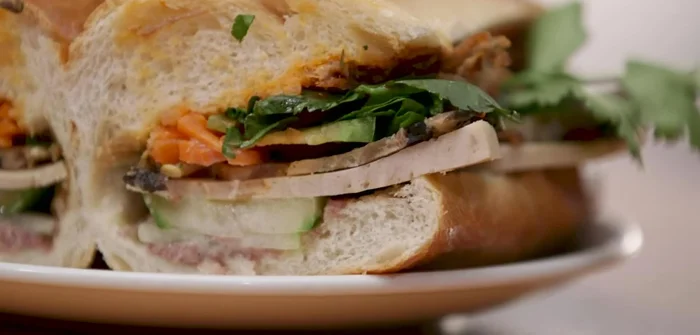The quintessential Vietnamese Banh Mi: a symphony of textures and tastes packed into a crusty baguette. This isn't just a sandwich; it's a culinary adventure, a vibrant reflection of Vietnamese culture and a testament to the power of simple ingredients elevated to perfection. From the crisp, airy baguette to the perfectly marinated meats and the explosion of fresh herbs and pickled vegetables, each element plays a crucial role in creating this beloved street food staple. Understanding the nuances of each component is key to unlocking the true potential of this iconic dish.
This guide will delve deep into the art of crafting the ultimate Banh Mi, exploring the secrets behind each ingredient and offering tips for achieving optimal flavor and texture. We'll guide you through the process of making your own delicious fillings, from perfectly seared meats to vibrant pickled carrots and daikon. Ready to embark on this culinary journey and learn to create the most incredible Banh Mi you’ve ever tasted? Then let's dive into the step-by-step process below!
Tools Needed
- Baking Sheet
- Mixing Bowls
- Whisk
- Knife
- Grill Pan (optional)
Ingredients
Step-by-Step Instructions
Step 1. Crafting the Banh Mi Components
- Use a high-quality Vietnamese baguette, or bake your own.
- Follow a recipe for traditional Vietnamese pate. Incorporate butter, ground pork, salt, sugar, ginger, and scallions. Cook and then whip for a smooth spreadable consistency.
- Use a pre-made version or make your own following a recipe, incorporating black peppercorns.
- Slice the Vietnamese ham, prepare the head cheese (Yato), and pickle the daikon and carrots.




Step 2. Northern Banh Mi Assembly
- Hollow out a portion of the baguette if desired. Layer the fillings in a moderate amount including the pate, ham, head cheese and a sprinkle of Maggi seasoning.

Step 3. Central & Southern Banh Mi Variations
- Layer pate, pork floss, pickled vegetables, cucumber, cilantro, basil, and fresh chili peppers, adding Maggi seasoning.
- Generously layer mayonnaise on both sides of the baguette. Layer pate, head cheese, Jala (sausage), Vietnamese pork belly (Jumbo), Maggi seasoning, pickled daikon and carrots, cucumber, cilantro, and Thai chili peppers. Grill the sandwich lightly if desired.


Step 4. The Ultimate Banh Mi Experience
- Layer aioli, Cha Lua, pate (layered in between), pork floss, pickled vegetables, cucumber, cilantro, basil, scallions, fresh black pepper, and hot sauce.

Read more: Vietnamese Cold Cuts (Thịt Nguội): Authentic Banh Mi Recipe
Tips
- Adjust the spice level to your preference using fresh chili peppers or hot sauce.
- Use high-quality ingredients for the best flavor.
- Don't be afraid to experiment with different combinations of fillings.
Nutrition
- N/A
FAQs
1. What are the key differences between Northern and Southern Vietnamese Banh Mi?
Northern Banh Mi often feature richer, more savory fillings like pate and headcheese, while Southern versions prioritize fresh herbs and lighter meats like grilled pork or chicken. The bread itself can also vary slightly in texture and crust.
2. Where can I find the best Banh Mi?
The best Banh Mi is subjective! Look for street vendors and smaller bakeries with long lines – that's often a good sign of quality and popularity. Don't be afraid to try different places to find your personal favorite.
From the bustling streets of Hanoi to the vibrant markets of Ho Chi Minh City, the Banh Mi’s journey reflects the diverse culinary landscape of Vietnam. This simple yet complex sandwich offers a delicious exploration of regional variations and the artistry of balance and flavor. So grab a baguette, gather your ingredients, and embark on your own Banh Mi adventure!
